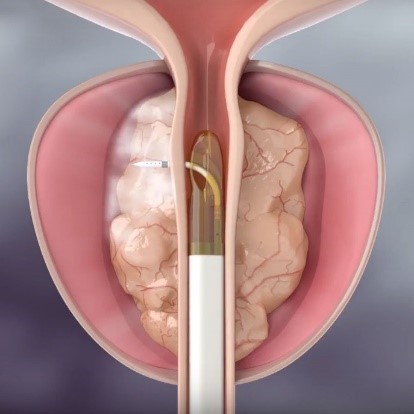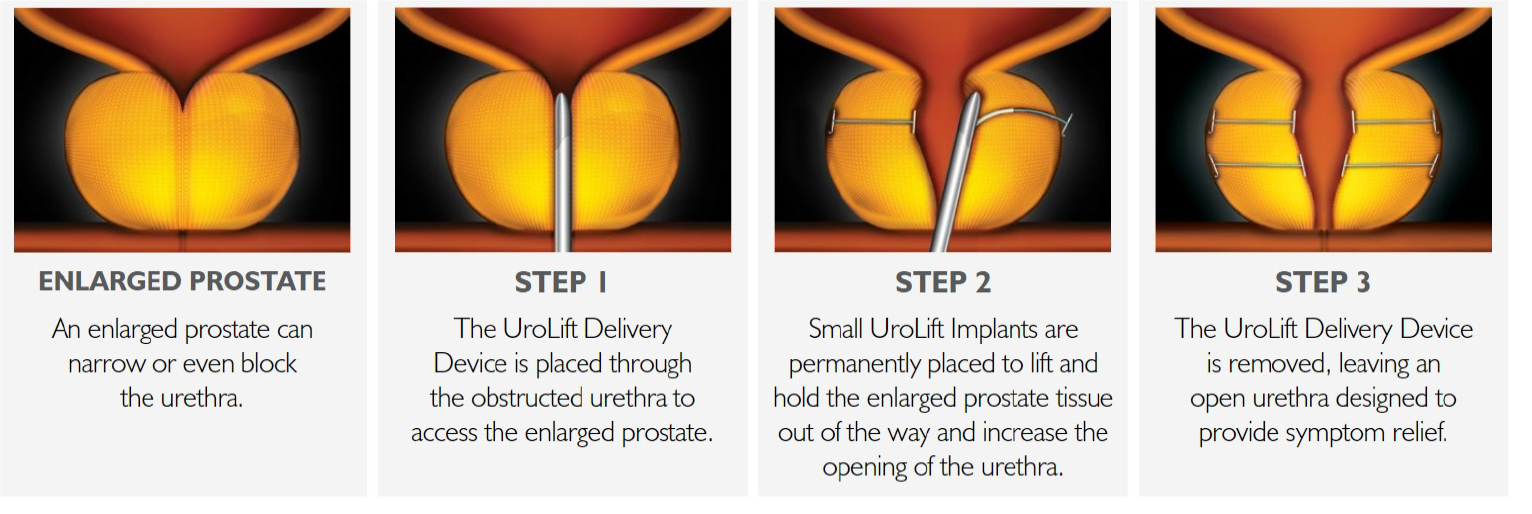Water Vapour Therapy is a transurethral thermal procedure that uses steam to treat Benign Prostatic Hyperplasia (BPH) by delivering targeted, controlled doses of thermal energy directly into the prostate gland. The steam is dispersed between cells, releasing heat energy that induces prostate cell death. Over time, the body's natural healing response eliminates the dead cells, causing the prostate to shrink and the urethra top open, thereby alleviating BPH symptoms.

Water Vapour Therapy is typically performed as a day case. After the procedure, patients are maintained on a urinary catheter for 7 to 14 days. Return to normal activities is expected within 2 to 4 weeks post-treatment. Symptoms and urine flow will continue to show improvement from 1 to 3 months.
Who is suitable to undergo the Water Vapour Therapy?
Patients who:
- Experience moderate BPH symptoms
- Wish to preserve sexual function
- Do not wish to be on long-term medications
- Are unable to tolerate the side effects of medication
- Has a prostate volume of 30 - 80ml

















